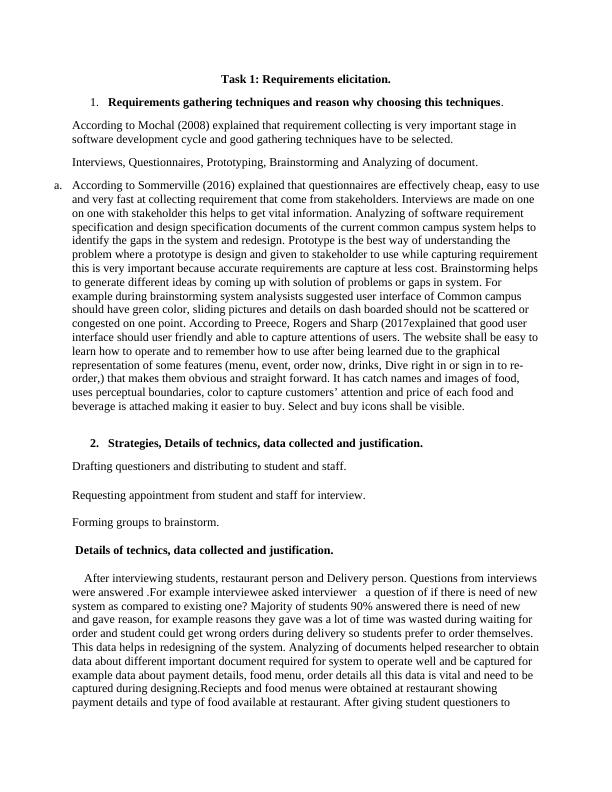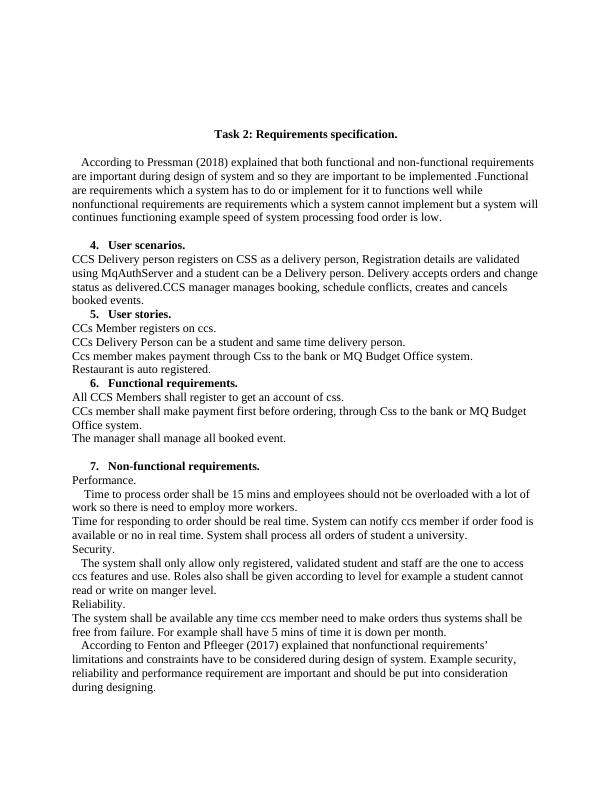Requirements Elicitation Techniques and Strategies for Common Campus System
Analyzing the Campus Common precinct on campus for staff, students, and visitors to enjoy.
14 Pages2240 Words255 Views
Added on 2023-04-21
About This Document
This document discusses the techniques and strategies for requirements elicitation in the Common Campus System. It explores the importance of interviews, questionnaires, prototyping, brainstorming, and analyzing documents. The data collected from these techniques is analyzed and justified for the redesign of the system. It also covers the functional and non-functional requirements, user scenarios, user stories, and use case descriptions. The document provides a system perspective through context and use case diagrams, as well as activity, sequence, state, and entity-class diagrams. References to relevant literature are also included.
Requirements Elicitation Techniques and Strategies for Common Campus System
Analyzing the Campus Common precinct on campus for staff, students, and visitors to enjoy.
Added on 2023-04-21
ShareRelated Documents
End of preview
Want to access all the pages? Upload your documents or become a member.
Requirements Elicitation Techniques
|13
|1630
|48
Applications Modelling and Development
|18
|1268
|51
Information System - Requirements Elicitation and UML Modelling
|10
|1818
|274
Observations 2 1 1-to-one Interviews
|12
|2191
|172
Business Requirements Analysis Assignment 2 – Part D
|9
|678
|60
Top 5 Requirements Elicitation Techniques
|4
|660
|206




